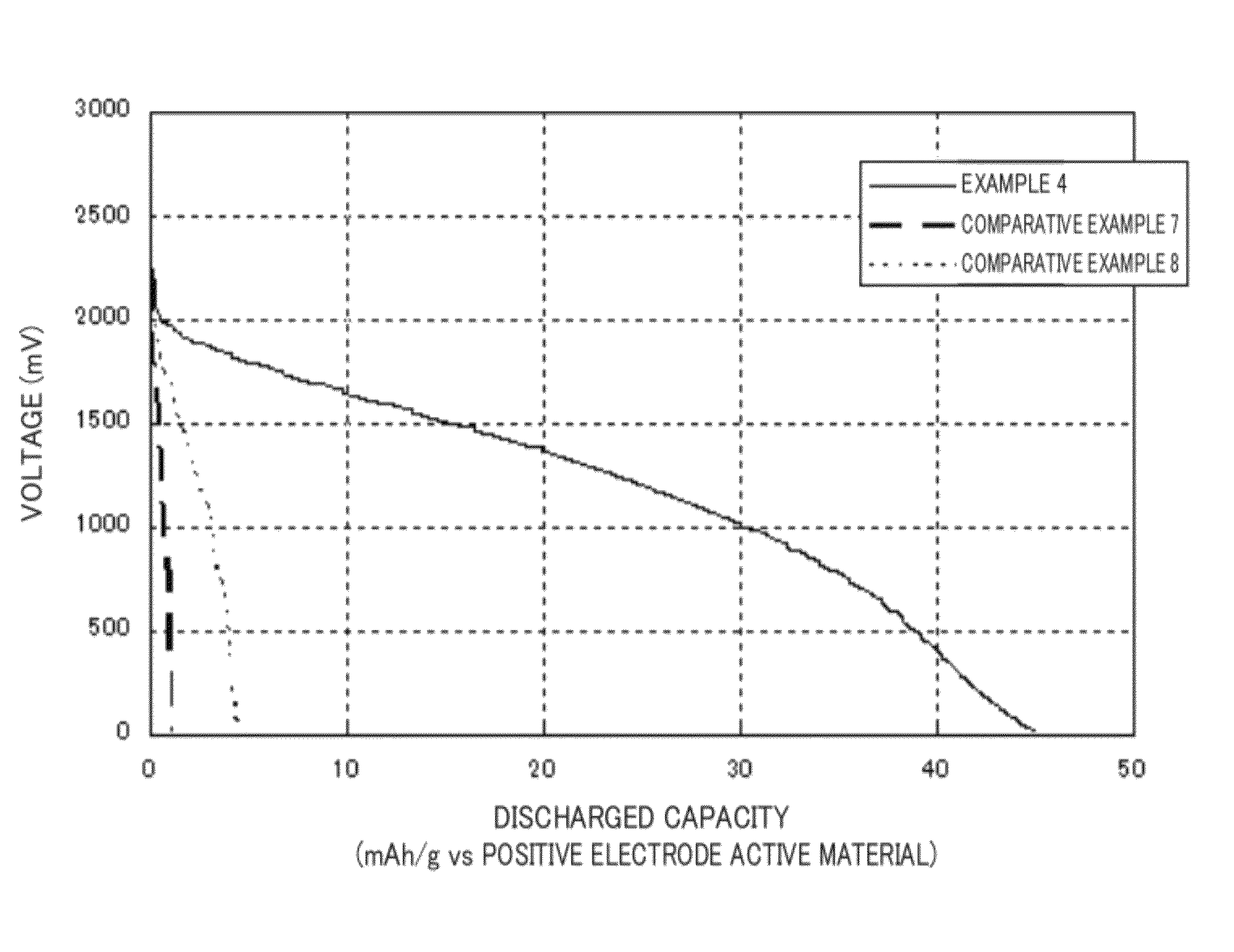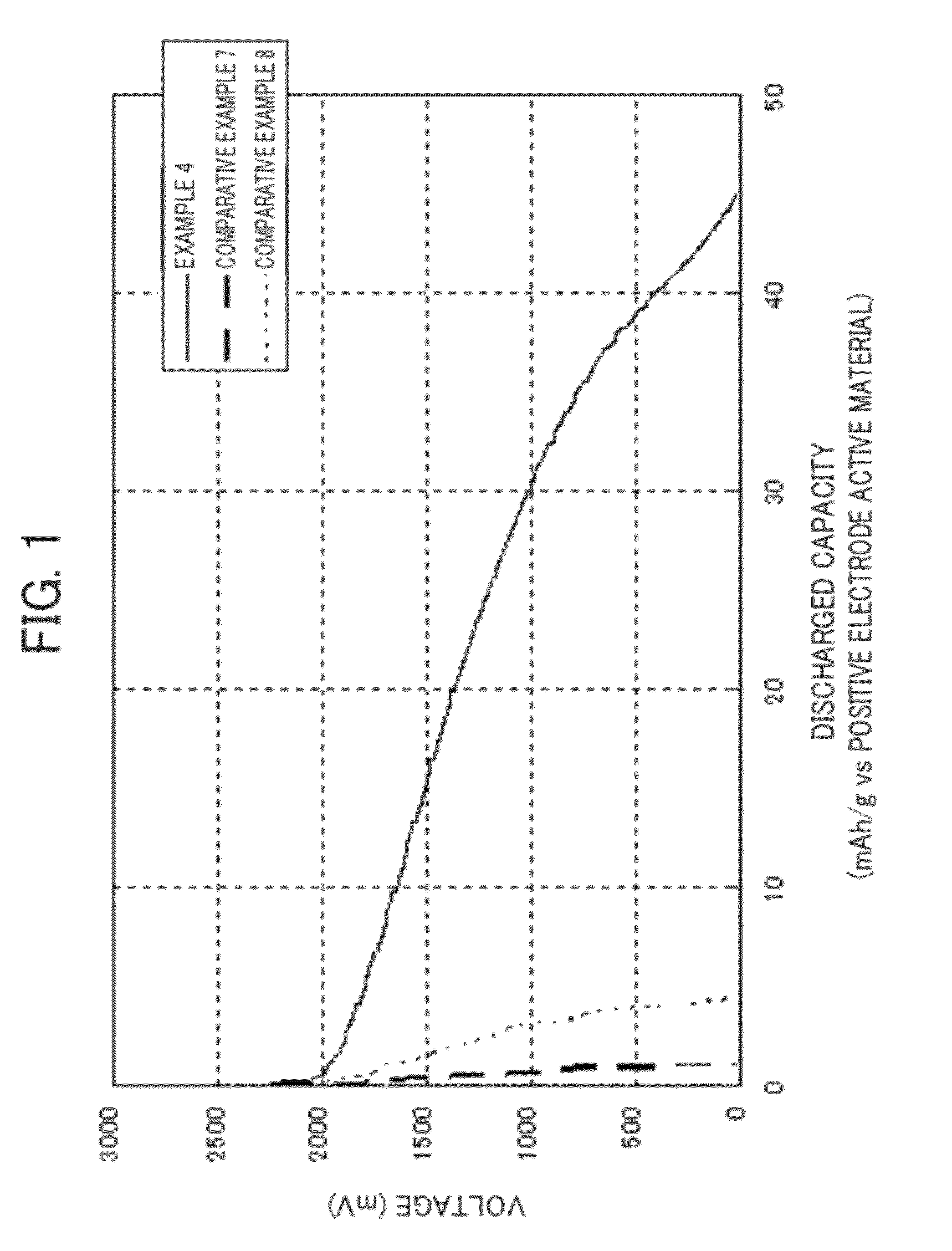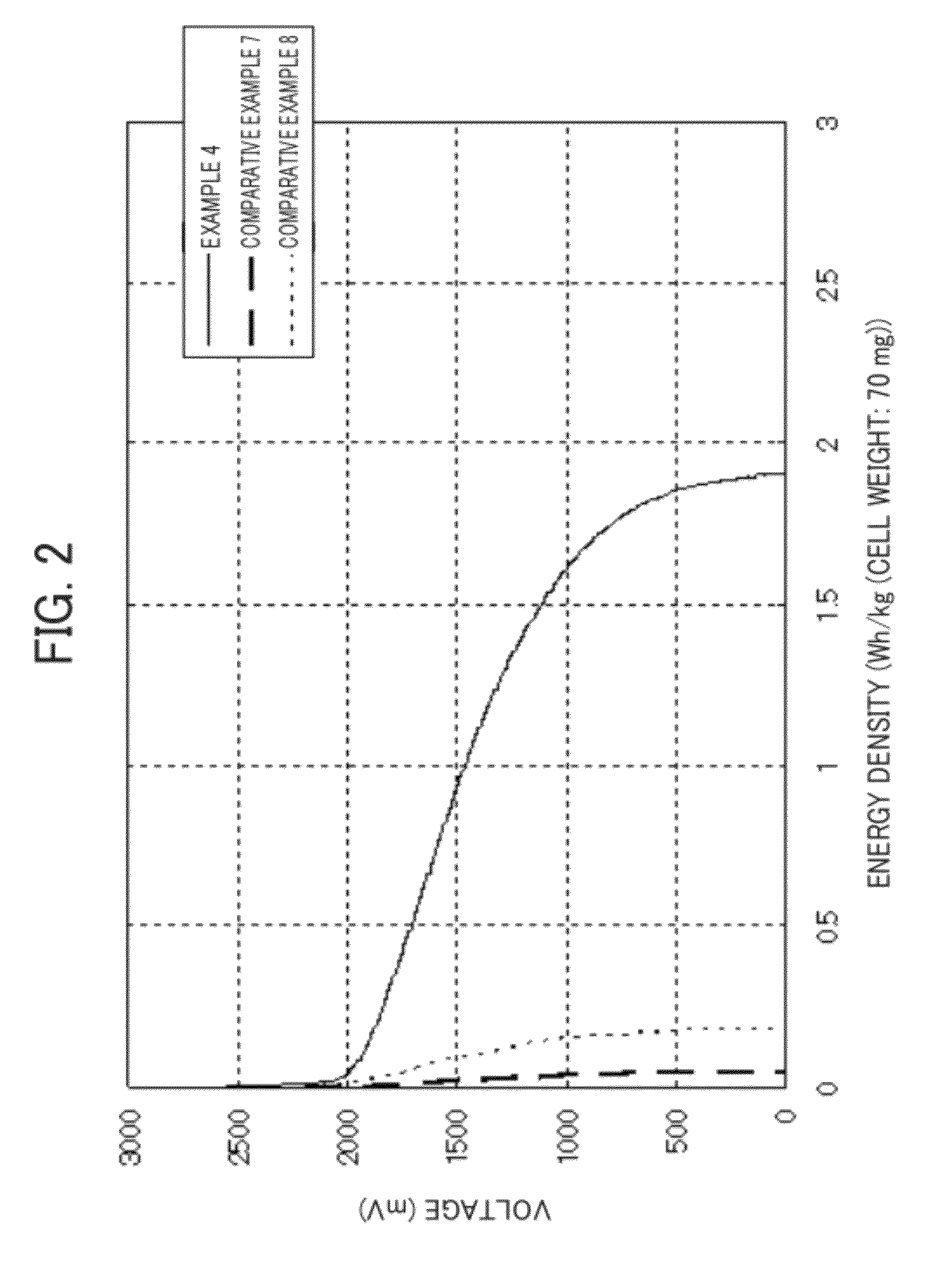All-solid secondary battery
a secondary battery and all-solid technology, applied in the direction of non-aqueous electrolyte cells, cell components, sustainable manufacturing/processing, etc., can solve the problems of poor charge-discharge behavior of the battery, the use of electrode active materials, and the inability to envisage a third phase, so as to reduce the generation of harmful gas caused by decomposition of the second inorganic solid electrolyte, the battery capacity or charge-discharge behavior is high, and the effect of high
- Summary
- Abstract
- Description
- Claims
- Application Information
AI Technical Summary
Benefits of technology
Problems solved by technology
Method used
Image
Examples
examples
[0124]The present invention is hereinafter described by providing specific examples.
examples 1 to 3
, Comparative Examples 1 to 6
Preparation of First Inorganic Solid Electrolyte
[0125]Table 1 shows compositions, glass transition temperatures, and ion conductivities of first inorganic solid electrolytes used in Examples 1 to 3 and Comparative Examples 1 to 6. For the first inorganic solid electrolytes, highly pure raw materials used for regular glasses such as oxides, hydroxides, carbonates, nitrates, fluorides, chlorides, and meta-phosphoric acid compounds corresponding to their raw materials of respective components were respectively selected and used. These raw materials were weighed in the compositional ratios of the first inorganic solid electrolytes shown in Table 1 and uniformly mixed, followed by being poured into a platinum crucible and melted at 1200° C. The molten glasses were sandwiched and quenched by ion plates thereby to prepare the first inorganic solid electrolytes. The resulting first inorganic solid electrolytes were respectively a transparent glass body at this t...
PUM
| Property | Measurement | Unit |
|---|---|---|
| Tg | aaaaa | aaaaa |
| Tg | aaaaa | aaaaa |
| softening temperature | aaaaa | aaaaa |
Abstract
Description
Claims
Application Information
 Login to View More
Login to View More - R&D
- Intellectual Property
- Life Sciences
- Materials
- Tech Scout
- Unparalleled Data Quality
- Higher Quality Content
- 60% Fewer Hallucinations
Browse by: Latest US Patents, China's latest patents, Technical Efficacy Thesaurus, Application Domain, Technology Topic, Popular Technical Reports.
© 2025 PatSnap. All rights reserved.Legal|Privacy policy|Modern Slavery Act Transparency Statement|Sitemap|About US| Contact US: help@patsnap.com



